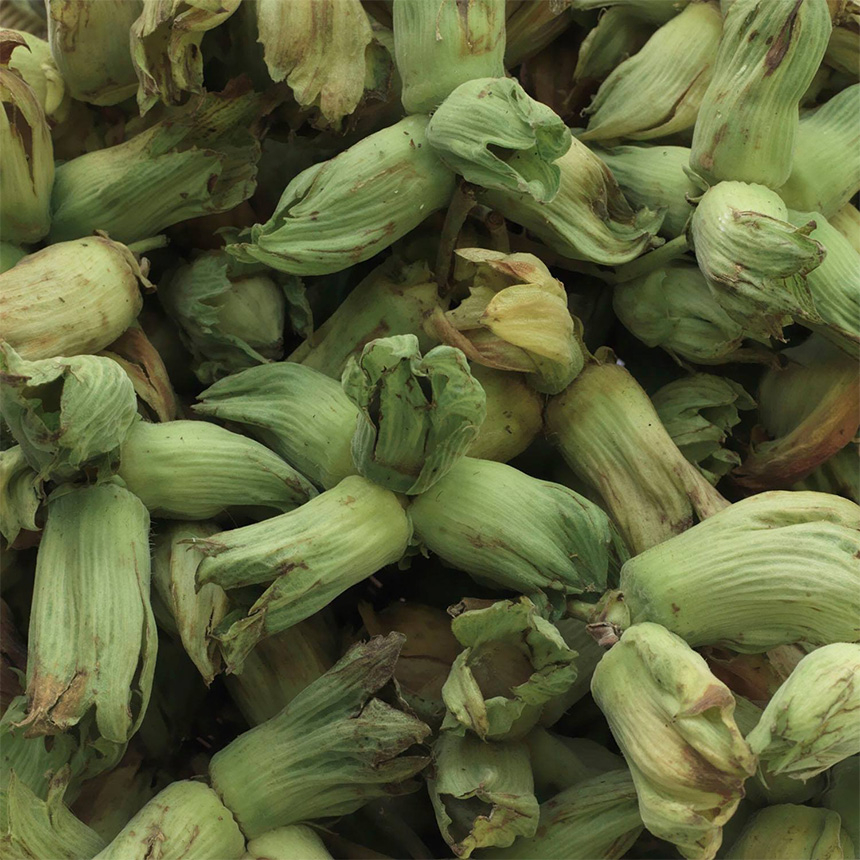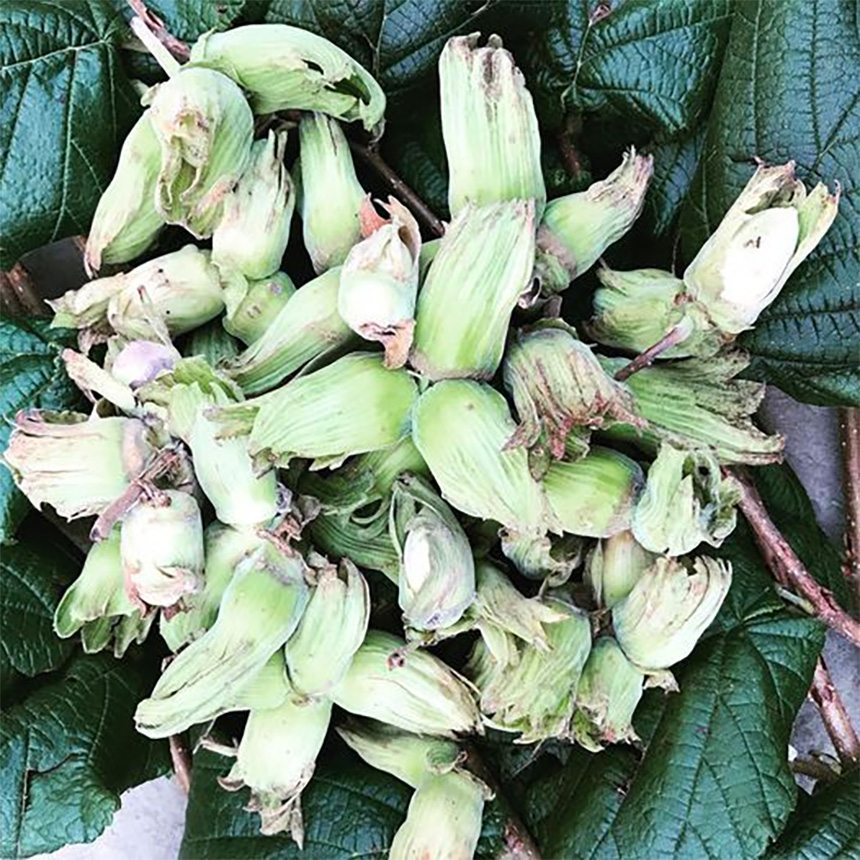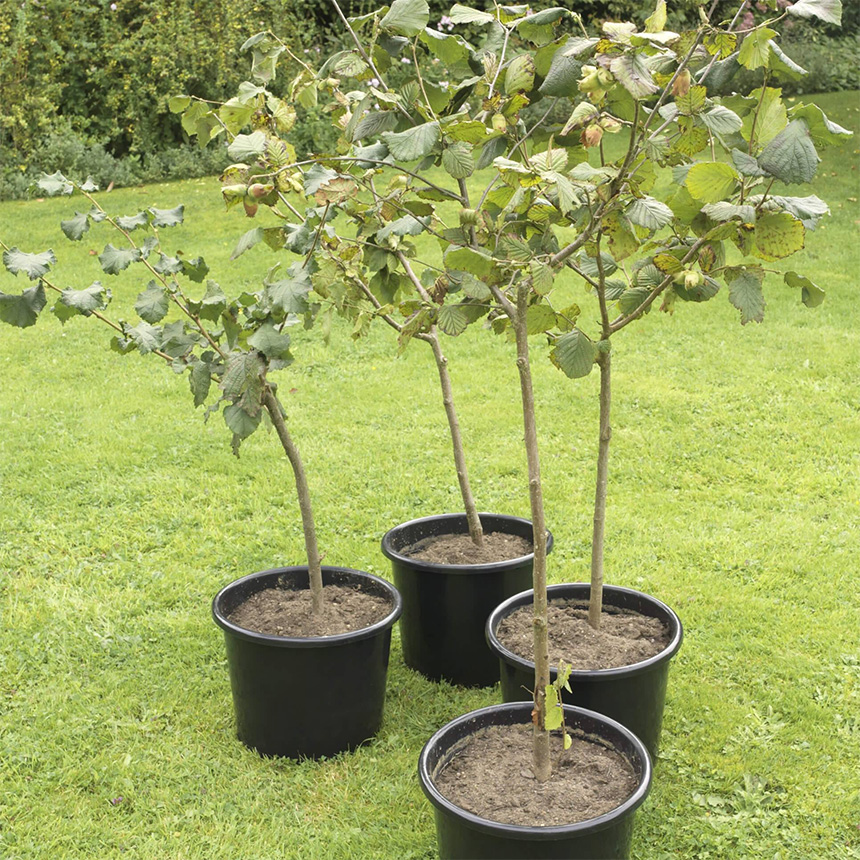
Potash Farm
.
.
.
.
- Fruit Trees, Bushes & Plants
- Unusual Crops
- Cobnut (Filbert) Bushes
- Cobnuts (Filberts) and Nut products
![]()
|
CONTACT DETAILS Beta listing full informations is only available on the Listings own website. Full details in this section will be available shortly
|
 |
||
| . | ||
|
Potash Farm is situated at the southern end of the St Mary’s Platt, which was originally part of the older Wrotham parish. The weathervane on top of the St Mary’s Platt church tower is dated 1846. Beside the church steps is the millennium sign that features cobnuts and hops, that were widely grown throughout this parish and surrounding West Kent area. Alexander Hunt has lived in the village for 50 years and his parents moved to Platt in 1950. The Potash Farm Plantation extends to about 6 acres and is likely to have been planted in about 1900. The plantation has been beautifully restored over the last five years and now contains about 500 original trees and 500 newly planted trees. The whole purpose of the restoration of Potash Farm Plantation is to preserve the plantation as a fine example of cobnut growing in a village that derives its name from cobnut production. Alexander Hunt says “The plantation is today part of the village’s heritage and having lived here all my life I feel this is part of the village and me”. Alexander Hunt has been involved with the Potash Farm Plantation for about twenty-five years, having recently purchased the plantation from a distant cousin of the Wolfe family. To assist in the restoration there has been some support and grant aid from the Kent Downs AONB unit and the Medway Valley Countryside Partnership. The hedges are of a mixed nature including hazel, blackthorn, hawthorn, beach, holly, oak and ash. The plantation has been re-fenced using organic chestnut spiles, pig-wire and barbed wire. It may be that at a point in the future the plantation is grazed with a rare bread of sheep etc or poultry. Throughout the plantation a wide range of birds and mammals are seen throughout the year including doormice, song thrushes, woodpeckers, tits, tree creapers, nuthatches, robins, pheasants, partridge, wrens and gold crests. The hedges are only pruned in late winter to allow the birds to eat the hips and haws. There are fox earths and badger sets, and grey squirrels are rampant but fortunately as the plantation is on two sides bordered by lanes, the traffic keeps the squirrels away from eating the majority of the cobnuts. There are milkmaids, buttercups, snowdrops, speedwell, primroses, arum lily and sages on the floor of the plantation. Today the whole of the crop is sold at Farmers Markets, select farm shops and London outlets including The Whole Foods Market in Kensington. The Jewish and Muslim communities buy many of the cobnuts during their festivals in October and September, such as Yom Kippur. The cobnuts are sold between mid August and mid June. The maintenance of the plantation throughout the year is kept to a minimum with mowing about four to five times a year. The by-products of the plantation, such as hazel sticks and wands are used as bean poles and in gardens locally. Alexander Hunt is a former Chairman of the Kentish Cobnuts Association which has about 175 members from Australia, California to St Mary’s Platt. |
||
|
. |
||
 |
||
| . | ||
|
Kentish Cobnuts A Cobnut is a type of hazelnut traditionally grown in Kent. They are harvested in their green state form mid August and with brown shells and husks by mid October. All the Kentish Cobnuts are sold dehusked from November onwards. . |
||
 |
||
| . | ||
|
Kentish Cobnuts Nuts are an ancient, natural and nutritious food which have been grown in Britain since time immemorial. During the Tudor period their cultivation on a properly managed basis was evident and formed the foundation upon which the Victorians planted a large number of cob nut orchards, called plats, resulting in some 7000 acres being grown by the turn of the century. The predominant nut grown was the Kentish cobnut, a type of cultivated hazelnut, bred in 1830 by a Mr Lambert of Goudhurst in Kent. The Kentish cobnut is a larger nut than a hazelnut and has a different and distinctive flavour of its own. The Victorians considered the Kentish cobnuts a form of delicacy and would eat them as an accompaniment to after dinner port. Regrettably the Kentish cobnut had been in decline for some decades and only about 250 acres are still grown today. Most of the remaining productive plats are seventy five to a hundred years old and are managed in a similar way to other fruit orchards in the county. Potash Farm Plantation is just this. A Kentish cobnut is a type of hazelnut, just as a Bramley is a type of apple. Unlike most other nuts, cobnuts are sold fresh, not partially dried. They are usually in season from the end of August through to October, but stored nuts may be available from selected outlets through to Christmas. At the beginning of the season the husks are green and the kernels particularly juicy. Nuts harvested later on are ripe, have brown shells and husks, and the full flavour has developed. Cobnuts are sold fresh, and like many other fresh foods they keep well in the fridge, for example in the salad drawer. They should not be allowed to sweat. Husks should be removed if loose but it is not necessary to take off every one. The addition of a little salt helps preserve the nuts. Stored correctly, ripe nuts will keep until Christmas and beyond. Unshelled cobnuts may also be frozen, although they may lose their crispness. Cobnuts are delicious fresh, for example on their own or in salads. Some people like to eat them with a little salt. They are also excellent roasted, which brings out their flavour. Roasted nuts can be eaten on their own, or used whole, chopped or ground to flavour pasta, meringues, crumbles and cakes etc. To roast cobnuts, crack and shell them, then cook them on tinfoil or a baking tray in an oven heated to about 150C, 300F, Gas Mark 2, for an hour or so the cooking time depends on how ripe and how dry they are. First they become soft, but do not remove them until they have hardened. Be careful not to let them burn. They can also be cooked in a microwave oven. Cobnut kernels typically contain 12% – 17% protein by dry weight, and about 10%-15% fibre. Cobnuts are very rich in vitamin E and in calcium, typically containing about 21mg and 141mg per 100g kernel (dry weight) respectively. They provided about 0.4mg and 0.55mg of vitamins B1 and B6 respectively per 100g dry weight. Most cobnuts are grown in Kent, but there are commercial orchards throughout the country. Cobnuts can be purchased through Farmers’ Markets, pick-your-own, mail order, or some supermarkets and greengrocers. You can grow cobnuts in your garden, but the grey squirrels may eat them before they are ripe. |
||
| . | ||
 |
||
| . | ||
 |
||
